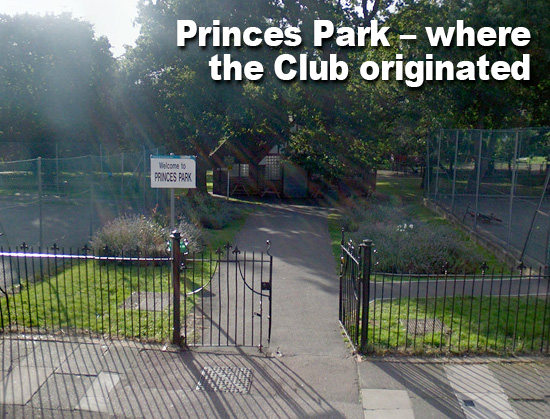
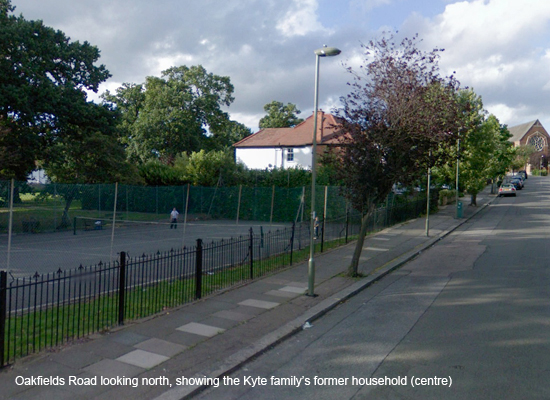
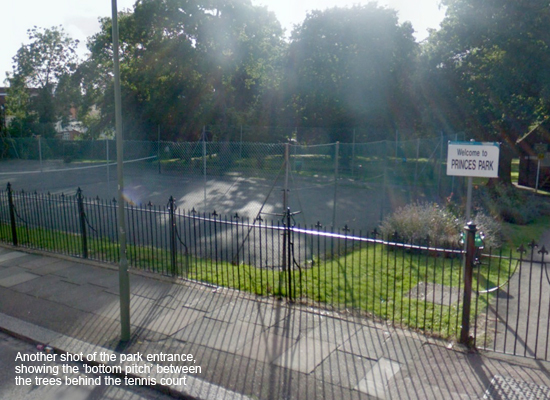
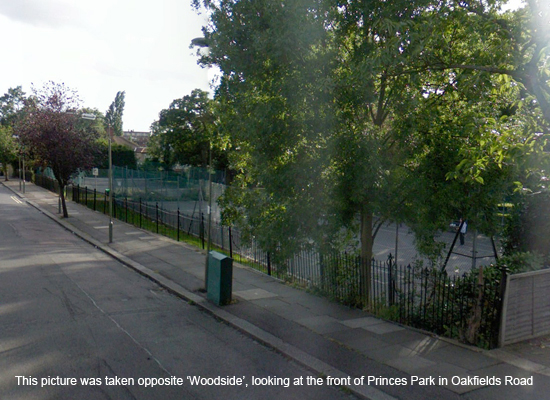
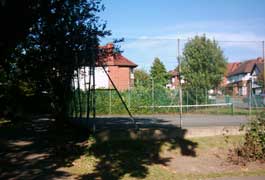 |
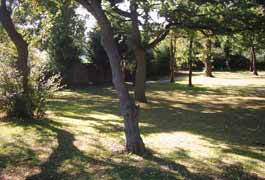 |
|
Near the Oakfields Road entrance to Princes Park looking to the right. The house in the middle behind tennis court 2 is Woodside at One Oakfields Road, where the Kyte family resided for over 40 years.
|
The two trees in the foreground represent the 'goalposts' used at the higher end of the 'bottom pitch'! The pathway on the left was the touchline; play continued much wider on the right side of the pitch.
|
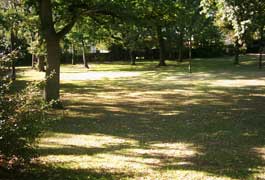 |
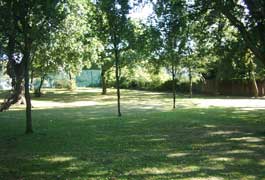 |
|
Standing in the goalmouth of the higher goal, looking down the incline of the 'bottom pitch'. The lower goal (two trees) can be seen to the left of the prominent large tree.
|
The view seen from the left side of the lower goal. The green wire tennis court fence can be seen to the immediate right of the higher goal. The fence on the right lies behind the 'touchline' path.
|
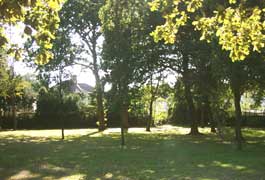 |
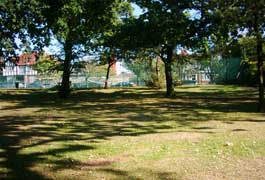 |
|
A side-on view of the middle section of the 'bottom pitch', showing the 'touchline' path and fence behind it. The park had houses backing on from Leeside Crescent and Princes Park Avenue, and part of Oakfields Road.
|
Standing in the centre of the lower goal looking up the pitch. You can see the higher goal at the top infront of the path. Beyond that is tennis court 1 and then Oakfields Road.
|
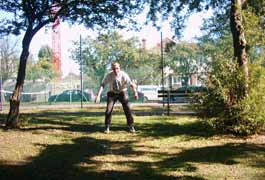 |
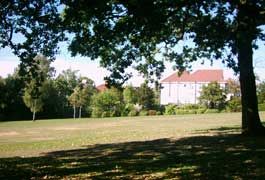 |
|
Peter Kyte, who played many a game in his youth on this very pitch (and who was a very capable goalkeeper), shows the scale of the higher goal. The 'goalpost' tree to his left is now overgrown; in years gone by this was never an obstruction.
|
The larger expanse of the 'top pitch', used for larger games when necessary. Small 4 or 5-a-side games were played on the 'bottom pitch'; anything between 6 and 11-a-side went to the 'top pitch'. The tree on the right was a popular cricket wicket in the summer!
|
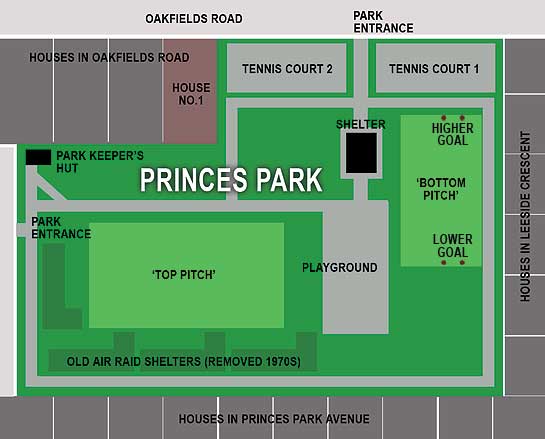 |
|
|
Simplified diagram of Princes Park in Temple Fortune, London NW11
|
|
 |
|
